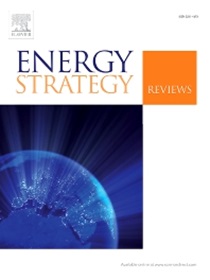An examination of rhetoric in relation to China's renewable energy plans in light of the dual-carbon aims
IF 7.9
2区 工程技术
Q1 ENERGY & FUELS
引用次数: 0
Abstract
China's ambitious Dual-Carbon objectives aim to peak carbon emissions by 2030 and achieve carbon neutrality by 2060, yet the alignment between policy rhetoric and actual implementation remains uncertain. While the government has emphasized renewable energy investments and sustainability narratives, challenges persist in policy enforcement, regional disparities, and the effectiveness of local government initiatives. This study examines China's renewable energy policies from 2000 to 2023, employing the Generalized Method of Moments (GMM) model across 30 provinces to assess the relationship between renewable energy technological innovation, local government competition, and carbon emissions reduction. The empirical findings reveal that renewable energy technology innovation significantly reduces carbon emissions, but its effectiveness varies regionally, with stronger impacts observed in highly marketized eastern provinces compared to central and western regions. Additionally, local government innovation competition enhances the carbon reduction effects of renewable energy investments, whereas economic competition weakens policy effectiveness by prioritizing short-term industrial growth over long-term sustainability goals. The results also indicate that energy consumption intensity and urbanization rates contribute to rising emissions, suggesting that renewable energy expansion alone is insufficient without comprehensive grid modernization and energy efficiency improvements. Furthermore, policy rhetoric on renewable energy has improved over time, yet inconsistencies in execution persist, particularly in less marketized regions where institutional and financial constraints hinder policy outcomes. These findings highlight the need for stronger policy enforcement, regional coordination, and targeted incentives to bridge the gap between rhetoric and practice, ensuring a more effective and equitable transition to a low-carbon economy.
从双碳目标的角度审视与中国可再生能源计划有关的言论
中国雄心勃勃的“双碳”目标旨在到2030年达到碳排放峰值,到2060年实现碳中和,但政策言论与实际实施之间的一致性仍不确定。虽然政府强调可再生能源投资和可持续发展,但在政策执行、地区差异和地方政府举措的有效性方面仍然存在挑战。本文采用广义矩量法(GMM)模型,考察了2000 - 2023年中国30个省份的可再生能源政策,以评估可再生能源技术创新、地方政府竞争与碳减排之间的关系。实证结果表明,可再生能源技术创新显著降低了碳排放,但其效果因地区而异,市场化程度高的东部省份对碳排放的影响强于中西部地区。此外,地方政府创新竞争增强了可再生能源投资的碳减排效果,而经济竞争则通过优先考虑短期工业增长而不是长期可持续性目标来削弱政策有效性。研究结果还表明,能源消耗强度和城市化率导致了排放的增加,这表明如果没有全面的电网现代化和能源效率的提高,仅靠可再生能源的扩张是不够的。此外,随着时间的推移,有关可再生能源的政策言论有所改善,但执行方面的不一致仍然存在,特别是在体制和资金限制阻碍政策成果的市场化程度较低的地区。这些发现突出表明,需要加强政策执行、区域协调和有针对性的激励措施,以弥合言论与实践之间的差距,确保更有效、更公平地向低碳经济过渡。
本文章由计算机程序翻译,如有差异,请以英文原文为准。
求助全文
约1分钟内获得全文
求助全文
来源期刊

Energy Strategy Reviews
Energy-Energy (miscellaneous)
CiteScore
12.80
自引率
4.90%
发文量
167
审稿时长
40 weeks
期刊介绍:
Energy Strategy Reviews is a gold open access journal that provides authoritative content on strategic decision-making and vision-sharing related to society''s energy needs.
Energy Strategy Reviews publishes:
• Analyses
• Methodologies
• Case Studies
• Reviews
And by invitation:
• Report Reviews
• Viewpoints
 求助内容:
求助内容: 应助结果提醒方式:
应助结果提醒方式:


